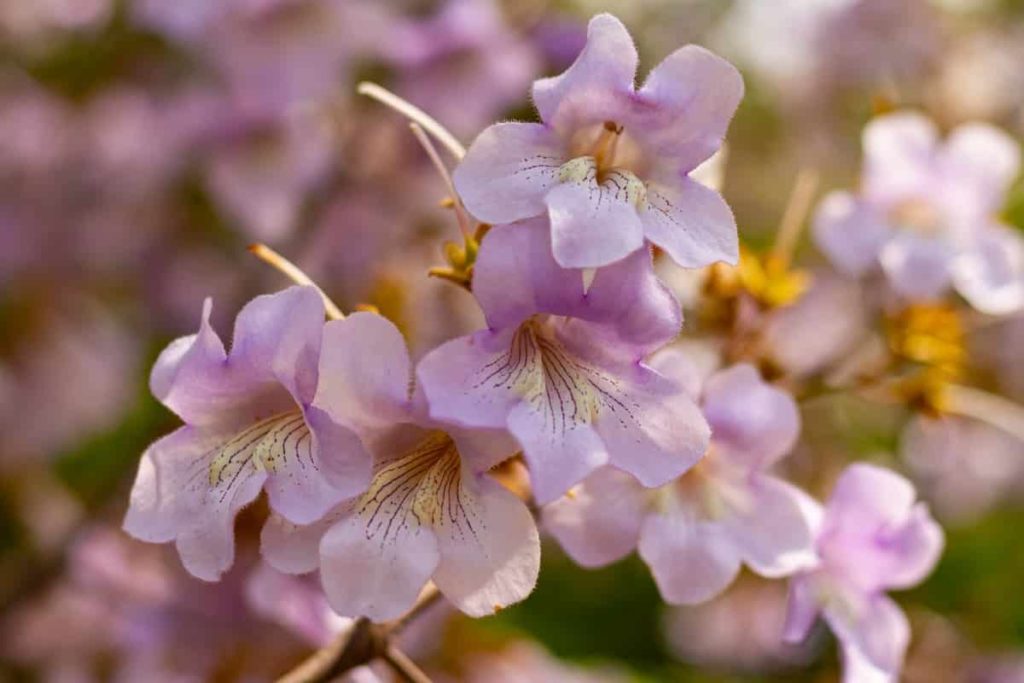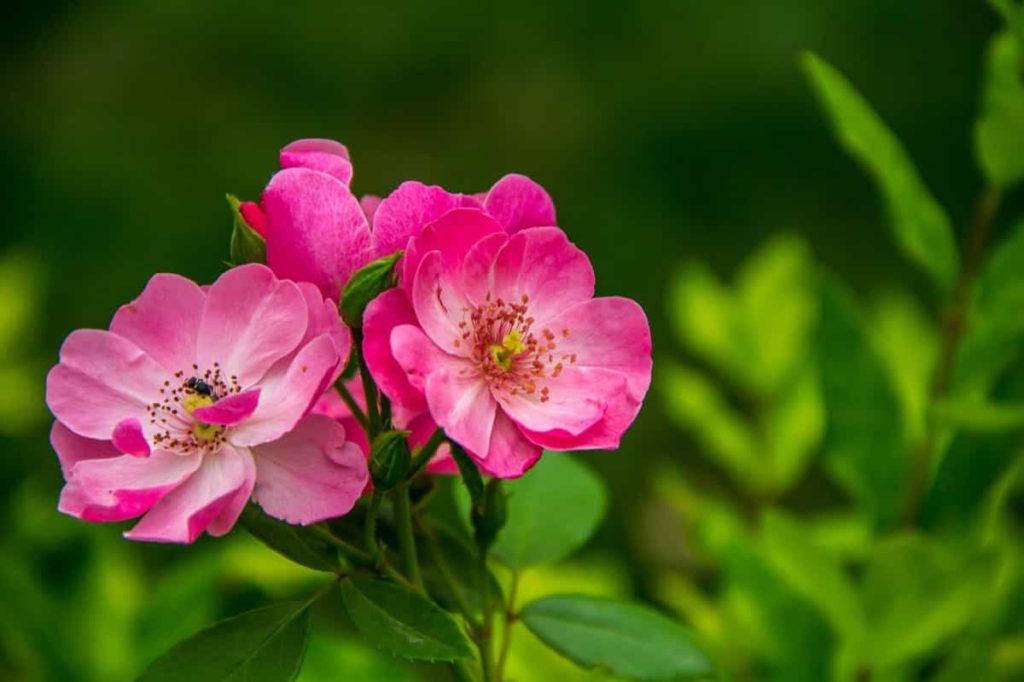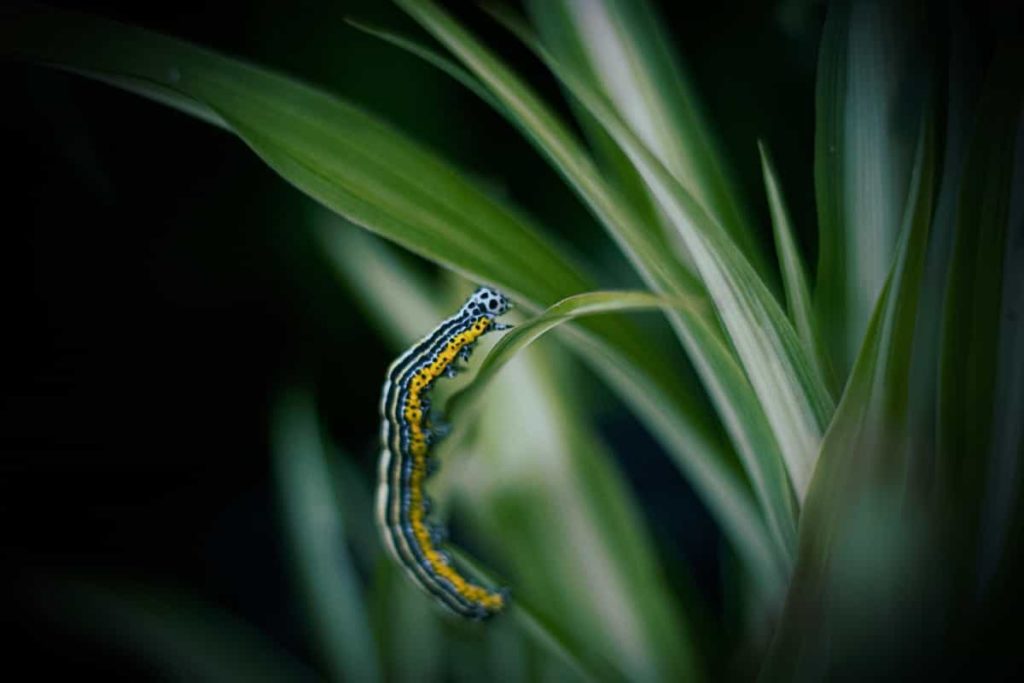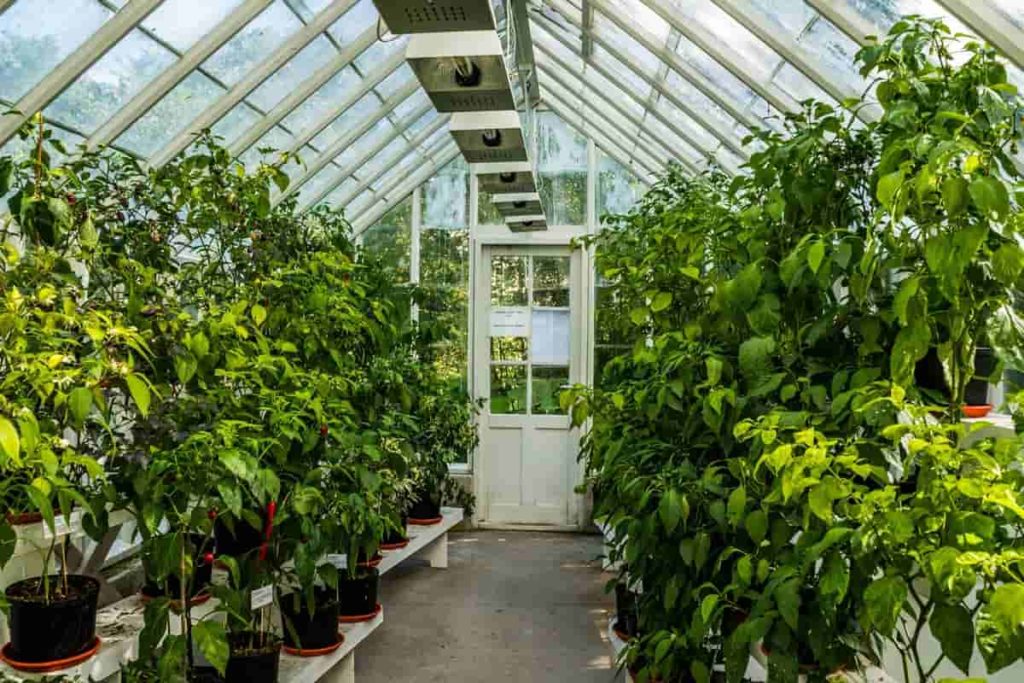Introduction to gardening tips for March: March is an interesting month in the garden. While it is important not to rush into gardening and endanger the tender seeds or seedlings, it is also important not to miss these first days of hot temperatures, fertile soil, and abundant rains.
Although the exact dates of garden work will depend on where your garden is and what its needs are, all gardeners should consider these works throughout March. Spring usually falls by the middle of March and often sunny days provide an opportunity for an increasing range of gardening works. March month is the perfect time to prepare for seedbeds, sow seeds, cut winter bushes, and generally clean around the garden.
Gardening tips for march, flower, vegetable, fruit gardening, houseplants care, trees & shrubs care, greenhouse care, and general plant maintenance

Flower gardening in March
- Pick any developing seed heads on Daffodils and other spring bulbs, but leave foliage to die back naturally.
- Finish the pruning of Roses earlier in the month.
- Cut Dogwoods, Willow, Cotinus, and Paulownia to the base to promote strong new growth.
- Start sowing hardy annuals outside including California Poppies, Nasturtiums, and Opium poppies Clean the Alpines when they start to bloom, remove the dead leaves, then mix with the grit to keep the leaves away from the humid soil.
- Keep Lillies and other summer flowering bulbs in pots and borders.
- Clean the borders, remove established and new growing weeds, then mix generously with garden manure.
- Sow native wildflower seeds in trays or modules, to prepare plants for your garden.
- Check tender new shoots for the Aphids, and remove the infestations before it gets out of hand.
- Continue dead-heading spring flowers and any remaining winter beds so they don’t set the seeds.
- Scatter the manure around flower beds and roses, shrubs, and hedges.
- Hardy annuals can be sown in pots or modules to provide color in the annual garden. In mild areas, you can sow directly out. Marking irregular-shaped seeds and broadcasting flows of different seeds look more natural.
- Sweet Peas can be sown outdoors this month. Keep these in a sunny position, maybe on a shelf in the greenhouse that gets plenty of light.
- The middle of March month is a perfect time to plant herbaceous perennials, together with Geranium, Astrantia, and Oriental poppies.
- Propagate dahlias more from the tuber.
- The perennials who are showing new shots from the crown can be propagated through Basal stem cuttings.
- Plant summer flowering bulbs. Prepare the soil first, ensuring that drainage is enough to prevent the bulbs from rotting. Anemone coronaria tuber sits in need of particularly well-drained soil.
- Perennials like Delphinium and annuals can be grown to create a useful and beautiful display.
- Continue to protect new growth from slugs and snails on Lilies, Delphiniums, Hostas, and any other infected plants.
- The Aphids can grow faster during mild spells. Remove early diseases by hand to prevent the problem from getting out of hand. Protect sweet pea plants in particular, as they can find sweet peas viruses, spread by Aphids and other juice-sucking insects.
- Keep an eye on the spot of Downy Mildew and black leaf on winter pansies. Take away any affected leaves and destroy badly affected plants.
In case if you miss this: Top 18 Flowers to Grow on the Terrace

Vegetable gardening in March
- Sow the Artichoke, Beetroot, Broad bean, Brussels sprouts, Cabbage, Cauliflower, Carrot, Lettuce, Parsley, and Spinach directly under the outside cloches or in preheated soil.
- Sow Aubergine and cucumber with other tender vegetables in hot greenhouses or sunny windows.
- Encourage strong growth of chives by dividing clumps.
- Sow tomatoes in a hot propagator for best results, or on sunny windows.
- Continue harvesting Kale and purple sprouting Broccoli in the early spring.
- Set the seed potatoes in trays in a bright but cool, frost-free space to encourage the shoot to form. Plant first and second initial varieties to ready beds outside at the end of the month.
- Any deep-rooted crops like horseradish, Parsnips, Jerusalem Artichoke, or Carrots in the earth should be harvested before new green top growth appears.
- Fertilize the garden by way of the soil is being set for planting.
- If the garden soil is too wet, delay planting. When the soil ball breaks easily after squeezing it together in your hand, it is so dry that it can be worked safely.
- As soon as you work on the ground, the asparagus and rhubarb roots should be planted.
- Plant Peas, Lettuce, Radish, kohlrabi, Mustard Greens, Collared, Turnips, Irish potatoes, Spinach, and Onions outside.
- Plant Beetroot, Carrot, Parsley, and Parsnip seeds out.
- Transplant Broccoli, Cabbage, Brussels Sprouts, Chinese Cabbage, and Cauliflower to the garden.
- Start the Tomato, Chilli, and Eggplant seeds indoors.
- Cover the prepared soil with black plastic sheets to keep it dry and warm in preparation for planting.
- Weed and mulch Asparagus bed. The roots of the Asparagus are shallow so the hand weeds are done to avoid damage.
In case if you miss this: Organic Vegetable Gardening for Beginners

Fruit gardening in March
- To stimulate the new canes, cut the Raspberry canes of autumn to the ground, which will bear fruit in the autumn. Cut summer-flourishing Raspberry canes tips that have moved on from the top of their support, cut just above a bud.
- Protect Apricots, Peaches, and Nectarines flowers from frost with screen or horticultural fleece.
- Mulch fruit trees with well-rotted manure or garden manure. Be careful not to have a mound mulch around the trunk of the trees.
- Cover the strawberries with a cloche to encourage them to take fruit before that.
- Mulch Rhubarb with a thick layer of well rotten compost to retain it healthy and reduce moisture loss through the soil. Be careful not to cover the crown, because it is where progress takes place.
- Now plant Strawberries in banked rows in beds, or plant in containers.
- Encourage the long, stalks of the Rhubarb to grow by covering your crowns with old buckets to emit any light.
- Slowly remove the mulch from the Strawberry as the weather heats up.
- Continue cutting apple trees. Burn or destroy all pruning to minimize the occurrence of insects or diseases.
- Continue cutting grapes. Bleeding does not hurt the vines. Tie the vines to the trellis before the buds swell to prevent the injury of the bud and the damage to the crop.
- When buds start to open, the Aphids start to come out on fruit trees.
- Now apply dormant oil sprays. Choose a dry day when cold temperatures are not expected.
- Spray Peach trees with fungicides to control the disease of peach leaf-curl.
- Peaches and Nectarines should be pruned shortly before bloom.
In case if you miss this: Top 25 Vegetables to Grow on Raised Beds

Houseplants care in March
- Put Begonia and caladium bulbs in a pot. Place in a warm, bright place to encourage growth.
- Prune any houseplants that have grown taller to encourage new growth.
- Houseplants can now be given monthly fertilizer as their growth resumes.
- The Confederate Jasmine and Japanese pittosporum, these two attractive houseplants that provide fragrant flowers indoors this month. Both thrive in average domestic conditions and are easy to grow plants.
- The repot rootbound plants transfer them from their existing pots to containers 2 inches in diameter. Check the pest activity and control as needed. Leggy plants can now be pruned.
Trees and shrubs care in March
- Keep planting hedging plants, shrubs, trees, and climbers. At the time of planting trees Stakes and rabbit guards should be fixed to prevent damage to root balls or bark.
- This is the best time to plant roses in heavy soil. Keep away from planting in areas where roses were grown earlier, or else, new introductions may be suffering from replanting disease.
- At the end of the month, you can plant evergreen shrubs and trees since autumn.
- Many of the summer or late summer-flowering deciduous shrubs can be sorted between January and March.
- Delay pruning spring-flowering shrubs until flowering, otherwise, this year’s display will be lost.
- Remove any reverted green shoots on the hardy multi-colored evergreens, to prevent the reversion from being handled.
- Tie the wall bushes and climbers on their help to protect them from wind damage.
- Summer-flowering jasmines can also be cut by reasonably strict in their situation. With them, you should prune stems completely on the ground level, and avoid reducing laterals, as it will damage the potential of the present year’s flowers.
- The enhanced climbers may be renovated this month. With the deciduous ones, you should now be able to tell which growth is dead and which is alive, because living stems will show the buds sprouting in life.
- If your trees are too large to manage a single pruning, you may need a tree surgeon. Otherwise, beware not to damage the tree while cutting thick branches.
- Inspect the box and holly trees that look sick for signs of burns.
- Bracket fungus is more visible on trees at this time of year.
- Check damage or cankers on the deciduous trees.
- Be aware that insects emerge as the weather heats up. The Caterpillars, Aphids, and Fly pests can all be annoying during mild spells. Early diseases can often be managed by hand removal making pesticides unnecessary.
In case if you miss this: 20 Vegetables to Plant in Winter in India

Greenhouse care in March
- Take down bubble insulation in the greenhouse once temperatures rise, to go into more light.
- Sow the vibrant annual climbers like the Spanish Flag and the Black-eyed Susan.
- Buy good-value young bedding plants to grow on a larger size under glass, or sow your own in a hot propagator.
- Sow dwarf French beans in a large pot for an early internal crop in June.
- The plant produced Freesia bulbs in rich, loam-based compost pots for aromatic flowers indoors this summer.
- Plant Sweet Peas in a deep pot and keep them frost-free on greenhouses.
- Take cuttings from the Dahlia Tubers planted last month to raise new plants.
- Protect the greenhouse sowings of Beans, Peas, Mangetouts, and sweet peas from hungry mice.
- Open greenhouse vents on sunny days to stop moisture build-up.
- Sow the Coleus on hot windows to enjoy your vibrant leaves in a tropical style display inside or outside the house.
- Try growing at plug plants in your greenhouse. They are a relatively cheap source of large numbers of plants and can be ordered and grown quickly if you didn’t get round to sowing seeds in good time earlier this season.
- Don’t forget to give too much space to greenhouse plants as they make new developments. This will help in preventing disease and controlling the initial attack of insects.
- Monitor plants at least every few days, to see if they need water.
- Open doors and vents at greenhouses to increase ventilation on hot, sunny days.
- Vine weevil larvae can be a serious worm of containerized plants, and become active this month.
- Careful attention to the bottom of the leaves, and in turn to each plant, can see the initial infections that would otherwise be missed. Control with biological control, and hang yellow sticky traps to help monitor the number of flying insects.
- Brush the fallen manure and debris, and pick up dead leaves from the plants. This will help to stop the spread of pests and diseases.
- Stem and root rot can affect young plants grown from seeds and cutting, especially those grown under glass.
In case if you miss this: Organic Vegetable Gardening in the Balcony

General plant maintenance in March
- It is a good time to plan for the garden. Walk around the garden, looking for potential problems and things you want to prepare or change.
- Re-pot the plants tied to the pot using fresh manure. Check the vine weevils while doing so.
- Prune the roses that bloom again and again.
- Cut any dogwood or willow back to the ground to encourage fresh new growth to showcase bright winter trunks next year.
- Prepare flower beds ready to sow hardy annuals from the end of March to April.
- add a mulch of well-rotted compost around the base of roses, fruit trees, and shrubs.
- Pot houseplants and Ferns in a little large pot using fresh houseplant compost. Use this opportunity to clean the leaves of your houseplant and remove any dead or dying leaves.
- Protect fruit tree flowers on cold nights using cover. Remove the cover during the day to give insects access to flowers.
- If not already done, make sure garden tools and mowers are ready for the upcoming season and checked in good condition.
- Check bird boxes and feeders for damage before fixing on a proper tree or wall. Make sure your boxes and feeders are located far away from cats.
- Prepare a couple of raised beds for the early seed sowings. The cloches or portable polythene tunnels are great for the protection of young seedlings as well as trapping heat in the soil of your raised bed. Crops like Beetroot, Carrot, Parsnip, Radish, and spring onions are all the best choices.
- Warm soil in your vegetable garden beds covering the surface with black sheeting. Black absorbs the rays of the sun and heats the soil below.
- Weed and clean your borders before the coming months of the attack.
- Go around the garden checking for the loss of frost. Cut back any affected stems.
- Prepare the land to plant by digging the ground and then leveling it.
- How to Grow Tomatoes Organically at Home: A Comprehensive Guide
- Organic Gardening on a Budget: Low-Cost Methods and Materials
- Gongura Seed Germination and Planting Methods
- Cabbage Seed Germination and Selection
- Broccoli Seed Germination and Selection
- Asparagus Seed Germination and Variety Selection
- Seasonal Flower Gardening: Best Practices for Spring, Summer, Fall, and Winter
- How to Grow Hibiscus from Flower
- Plantation Ideas for Home Decoration: A Beginners Guide
- Flower Garden Designs and Layouts for Beginners
- Planting and Spacing Techniques in Papaya: A Beginner’s Guide
- Growing Gold: Essential Techniques for Planting Pineapples
- How to Make Kalanchoe Plant Bushy: Home Remedies and Solutions
- 11 Reasons Why Your Gardenia is Not Blooming: Home Remedies and Solutions
- Eco Elegance: The Guide to Designing a Drought-Tolerant Landscape
- Gardening on a Slope: Strategies for Hillside Landscaping
- Nourish and Flourish: Top Organic Mulches for Thriving House Plants
- Everything You Want to Know about Indian Mogra Flower: Discover Uses and Growing
- Green Thumb Success: Expert Tips for Cultivating Greenhouse Pumpkins All Year Round
- Maximize Growth & Flavor: The Ultimate Guide to Companion Planting in Herb Gardens
- How to Control Rhododendron Problems Naturally: Home Remedies and Organic Ways to Fix Them
- Natural Magic: The Remarkable Benefits of Cinnamon for Plants
- Best Steps to Revive Dying Tulip with Natural and Organic Treatment
- 10 Reasons Why Your Angel Trumpet is Not Blooming: Remedies and Treatment
- How to Fix Periwinkle Leaf and Flower-Related Problems: Natural Remedies and Solutions
- How to Fix Zinnias Leaf and Flower Problems: Discover Natural and Home Remedies
- Organic Steps to Induce Lemon Tree Flowers: A Comprehensive Guide
- Bloom Booster: Crafting the Perfect Homemade Bougainvillea Fertilizer
- Optimizing Growth: A Guide to Applying NPK Fertilizer for Potted Plants
- 10 Best Homemade Fertilizers for Rubber Plant: DIY Recipes and Application Method
- How to Boost Female Pumpkin Flowers: Effective Steps for More Flowers and High Yields
- Transform Your Indoor Garden: Top Benefits of Pink Salt for Houseplants
- 10 Best Homemade Fertilizers for Peacock Plants (Calathea): Easy DIY Guide
- Unlock Blooms: 9 Reasons Why Your Potted Chrysanthemum is Not Blooming
- 8 Reasons Why Your Potted Hibiscus is Not Blooming: Fix it with Simple Solutions
- Unlock Blooms: 9 Key Reasons Your Potted Frangipani Won’t Flower